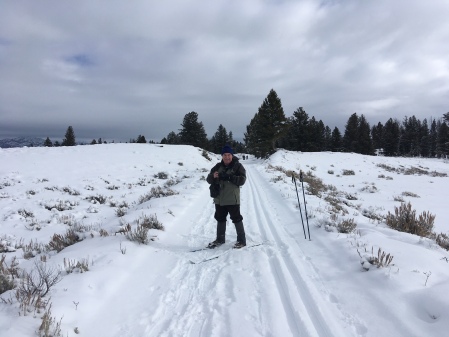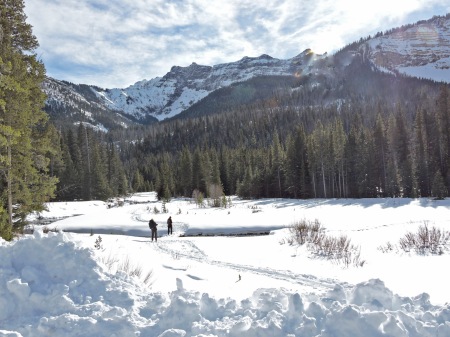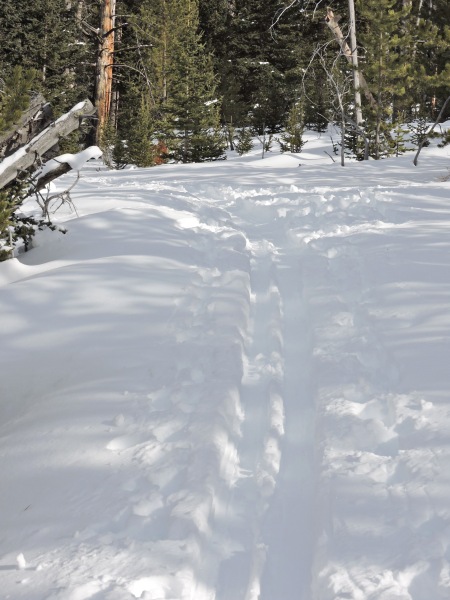INTRODUCTION
Since my last update, 1/14/19, much has transpired, and this post will contain the usual chronological recounting of significant events since then. First, I want to make some observations regarding chemotherapy in general. I do this because I have learned a lot in recent months, and it strikes me that I was relatively ignorant on the subject until recently. My hope is to enlighten family and friends who might be similarly uninformed on the subject.
I had known for years that chemotherapy in general was the gradual “poisoning” of your body, in an attempt to kill off the unwanted and potentially deadly cancer cells that threaten it. The very concept of harming the body in order to save it seemed so foreign to me when I first heard about it, many years ago. My oncologist walked me through a bit of the biomechanics of how this process works, shortly before I commenced chemotherapy. He told me that the chemicals infused target fast-growing cells. The nastiest cancer cells are those that have metastasized, and are growing rapidly. Other fast-growing cells in our bodies include those that make our hair and nails grow, and this explains why so many chemotherapy subjects lose their hair via the process. (In my case, I am seeing a gradual, and slowly escalating loss of body hair, but so far, not the real dramatic type that some patients experience. My beard is not growing near as fast as it has over my adult life, and my nails have slowed down their growth.) Those other fast-growing cells in a cancer patient’s body experience “collateral damage” during chemotherapy. I am told that much of my right trochanter (upper portion of right femur) should reform after the cancer cells are killed off by the chemicals and subsequent radiation. I am counting on that to help me get back in the game on hiking and downhill skiing!
One major point I want to make is that there are tremendous individual differences in the types of cancer that individual humans experience, thus differences in types of chemotherapy. Also, individuals react differently to the same type of chemo. One person might lose their hair rapidly and totally, while I have met some who have done an admirable job of keeping theirs. Other side effects, like fatigue and nausea, can vary all over the board from individual to individual. Chemotherapy plays havoc with our immune system, and individual immune systems vary widely for any number of reasons. Here’s just a simple off the wall example of the impact of chemotherapy on my lifestyle. While I am undergoing chemo, I am forewarned to avoid any enclosed area, like an apartment, condo, house, or vehicle that contains a cat and the accompanying litterbox. That is because kitty litter is a potent reservoir of toxoplasmosis. There are an estimated 40 million Americans infected with toxoplasmosis, so it can’t be all that serious. True for most folks, but for anyone with a compromised immune system, toxoplasmosis is a much more serious threat! My friend, Linda, has a very personable cat, Tao, who just happens to have a litterbox, so I won’t be visiting Linda or Tao for the next several months.
Part of my motivation for this Introduction is to showcase the broad array of individual situations and reactions to chemotherapy. I do not want folks reading my blog, and getting the impression that because I seem to be having such a relatively easy time of it, everyone else should. That is far from the case! I am blessed multifold. I have one of the less deadly types of cancer, although with the transformation of my lymphoma, I am now in a more dangerous “cancer playground”. I am younger and healthier than many of the cancer patients I see at the Bozeman Health Cancer Center. I am blessed with a historically robust immune system. I have a lot going for me. All these years of backpacking, day hiking, skiing, and engaging in a plethora of other sports and outdoor activities is paying off. Every day, I see the names of people younger than me in the obituary column of the local newspaper, who have perished from this dread disease. It is seeing substantially younger people, who have had the bulk of their lives ripped away from them that particularly pains me. I have a visceral reaction that makes me wish I could trade places with them, so they could enjoy the kind of long life I have known, and their family be spared the unimaginable pain they must be going through.
I have now had two of the four chemotherapy infusion sessions that are planned for me at 3 week intervals. With having to return to the Center the day after infusion for a Neulasta injection, plus the “dry run” back on December 18, I have had a fair amount of exposure to the nursing staff in the Infusion area of the Cancer Center. I am constantly amazed at how these dedicated professionals maintain their upbeat demeanor as they deal with cancer patients. These are specialized nurses, who have deliberately chosen to work in this concentration. They never cease to amaze me. I know there is some hefty amount of mortality associated with this patient population, and somehow, these people just keep putting one foot in front of the other, and soldiering on, seemingly to not let it get to them. I say “seemingly” because there is no way of knowing what kind of emotional tricks they have to play on themselves to stay in the game in the face of repetitive loss. They must justify their daily investment of time in knowing (1) they are providing extremely significant assistance to those fighting for their lives, and (2) over time, we are slowly winning battles in the war against cancer.
Speaking of the war against cancer, I want to mention that everywhere I look, I am seeing evidence of how continued research and technological development is benefiting cancer patients. Twenty years ago, the outlook for someone with the transformed lymphoma T-cells that I am fighting was bleak. Now, roughly 80% of patients have a successful outcome via chemotherapy and radiation. That’s just one example of so many. We are now seeing breakthroughs in using our knowledge of the human genome to develop pharmaceutical “cocktails”, tailored to an individual’s unique genetic makeup, to combat some of the most virulent types of cancer. Any support you can lend to the cause is appreciated, be that financial via cash donations to the American Cancer Society or other organizations supporting research and treatment, political support on Capitol Hill for the allocation of tax dollars to research, or volunteering in your community. There are so many different ways we can all join the fight, and we never know when our effort might be helping a family member, a friend, a neighbor, or even ourselves down the road.
Thanks for sticking with me through this lengthy Introduction. Now, here’s the latest/greatest since 1/14/19:
1/15/19: Chemo Commencement
On this very first infusion day, I had to show up about 45 minutes ahead of when the chemotherapy was scheduled to begin, so I could get a blood draw accomplished and analyzed. It turned out to be more like an hour, so since all my infusions are scheduled for Tuesdays, I opted to make future appointments to have blood drawn on the Monday afternoon preceding chemo. Since my oncologist wants me to have blood labs weekly, this has worked out to be a handy routine, where I know I have to swing by the home of the “vampires” every Monday afternoon around 3:00 p.m. It’s a ritual that works well for me.
Hannah was my nurse once again. We started out with a series of injections via the port in my chest, prior to getting down to the serious business of the chemotherapy chemicals. These initial substances were primarily steroids, including Benadryl. I noticed some mild physical reactions to these, but nothing serious. Then came the “Big Kahuna”, Rituxan, AKA Rituximab. It is a “monoclonal antibody”, essentially a biological agent, as opposed to the other 3 agents, which are all chemicals. On the very first chemo session, Rituxan typically takes 4-5 hours for the injection. Subsequent sessions usually run around 90 minutes. It turned out my body was able to take up the Rituxan quicker than most. The oncologist, Dr. Hensold, swung by in the afternoon, consulted with Hannah, and decided that my future Rituxan injections could be via an alternative means (abdominal injection), which goes much faster, like 10-20 minutes. The thought of having my chemo day cut in half in the future was indeed good news!
Once the Rituxan was out of the way, we only had about an hour’s worth of the other 3 injections, Doxorubicin, Vincristine, and Cytoxan to do. Doxorubicin is actually an exotic antibiotic, rather than a “chemical”. It is red in color, and given in two large doses. When it is being administered, the patient has to keep their mouth real moist and cool. That’s where popsicles come in! Yes, popsicles. This was the “pleasant surprise of the day”. Hannah asked me what flavor I preferred. They had quite an assortment. I chose my all time favorite, i.e. orange. Hannah kept encouraging me to give that popsicle a workout. I did so well that I was nearing completion of the second half, and we were only halfway through the injection. That opened up the possibility of asking for a second orange popsicle, and I took advantage of it. The second one was every bit as enjoyable as the first, and I suffered no side effects. We zoomed through the other two injections, and I was out of there an hour or more earlier than anticipated. It left me over an hour to relax at home, before heading to the Museum of the Rockies to catch a very educational presentation on paleoecology by Christine Whitlock, Ph.D. Hannah had suggested I just go home and stay home, but I had been looking forward to this learning opportunity for weeks. I feared I might start nodding off during the presentation, but I was able to stay alert throughout.
It was afterward that I made my big blunder of the day. I had been seeing television ads for a new type of pizza loaded with pepperoni at Little Caesars, and I wanted to check it out. I picked one up on the way home, consumed it in its entirety, and proceeded to pay the price overnight. It was a good thing I had plenty of antacid tablets available, as well as anti-nausea medicine!
1/16/19: First Neulasta Injection
I had to return to the hospital 24 hours after completing Tuesday’s chemotherapy for the Neulasta injection. I learned that bone pain is a frequent side effect of Neulasta. This substance induces the bone marrow to produce more white blood cells to counteract the action of the chemotherapy, which tends to lower your white blood cell count.
1/23/19: Major pain
During that first week after chemotherapy I anxiously waited for all manner of potential side effects to materialize, but other than intermittent head cold symptoms for the first 2 or 3 days, and occasional very minor nausea (nervous stomach), I escaped relatively unscathed. During the night, at 2:45 a.m. on Wednesday, 1/23/19, 6.5 days after the Neulasta injection, I woke up in agony. My lumbar spine felt like it was on fire! I have had occasional lumbar spine issues over the years, but not in the past 3 or 4 years. It just didn’t make sense, until I started thinking maybe it was related to the Neulasta shot. After an hour or two, the pain started moving down to my waist, and then over to my left hip. I called the Cancer Center as soon as their phones were operating, at 8:00 a.m. I was told a nurse would call me. After about 45 minutes, I heard from a nurse, who said she would try to get me in front of the nurse practitioner or one of the P.A.’s. A half hour later, she called again, this time saying that Dr. Hensold wanted me to get an x-ray at the hospital, and he would see me at 10:30 a.m. In the interim, I could take an NSAID, like ibuprofen. I asked the nurse if I could use Aleve, and she said “Yes”. I downed two of them, and headed for the hospital. By the time I got to the hospital, the pain had totally subsided. The x-ray was taken care of quite quickly, and before long, I was in front of Dr. Hensold. He explained that what I felt was in fact bone pain. The nurse had told me that typically, that side effect shows up in the first day or two after a Neulasta injection. Once again, I was an outlier. Dr. Hensold told me that the lumbar vertebrae are some of the most marrow intensive bones in the body, which is why they are frequent targets for Neulasta-related bone pain. The x-ray seemed to show we were already making progress in the fight against Osama. When I mentioned how the pain had migrated down the lumbar spine to my waist, and only seemed to move to the left hip area, Dr. Hensold reminded me that with my metal prosthetic right hip, there was no marrow for the pain to migrate to on the right. It was a real “Duh” moment for the guy with the artificial hip!
1/26/19: Skiing from Frog Rock to Blacktail Plateau Drive and Beyond
My leg was feeling so good that I scheduled my first cross-country ski outing of the season for Saturday, 1/26/19. It was a Meetup, and I had 5 Members accompanying me. With a Member who had a wrist injury that prompted her to eschew her skis in favor of snowshoes, for fear of injuring the wrist further in the event of a fall, we were like the “walking wounded”, but we managed to do a 5 mile out and back trek in relatively flat terrain. We had decent weather, which helped considerably.
1/29/19: Day of Cardio Reckoning
In my second and third weeks after my first chemotherapy treatment, I was getting an occasional sore spot in my mouth, but they would not last long. Compazine was taking care of any slight nausea that would appear. For all intents and purposes, I was “cruising”. My primary care physician had orchestrated an appointment, and I had a feeling I knew what was coming.
Sure enough, given the results of the MUGA exam, the stress test with Lexiscan, and the other cardio diagnostics, he wanted to put me on a statin and a beta blocker, which he did. It just added to the pipeline of pills I devour every day. He started me out on a minimal dosage, and so far I have not suffered any side effects. We have to watch the beta blocker in particular, because my blood pressure has always been good, and we don’t want it to drop into the low range.
2/1/19: Skiing the Bannock Trail
As I watched the weather forecast for the first weekend in February, I could see that steadily, day after day, Friday the 1st was predicted to be a beautiful day, with sunny skies and warm temperatures, even in Cooke City, outside Yellowstone’s Northeast Entrance. Saturday and Sunday were going to be cloudy, cold, and snowy, so I scheduled our next ski outing for Friday. The forecast held, and we had lovely weather. We skied the 2 miles to the park boundary, and went beyond, but did not make it to where you start seeing the summer homes between Silver Gate and Cooke City.

Looking southwest from the Warm Creek pullout toward Barronette Peak, the snow is so much deeper than what we had 6 days earlier at Frog Rock.

Looking down Soda Butte Creek, with the area where the Upper Pebble Creek trail crests the ridge north of Barronette Peak in the distance

We had recent bison tracks all around us. We even saw a pair of bulls off to the right of the trail.

After a mile or so, the terrain opens up into a broad flat. Soon after, we started seeing relatively recent moose tracks, and evidence of recent browsing on fir and spruce trees.

We had ample evidence that coyotes had been using the ski trail, including repetitive scent marking.
2/5/19: Second Chemotherapy Infusion Session
On this past Tuesday, I met with the Whitney, the nurse practitioner, before meeting my new nurse for the day, Ashley. Whitney suggested I take Claritin or the generic version to mitigate the risk of another bone pain incident in the wake of the upcoming Neulasta injection. I took her up on that suggestion, and am hoping to not have a repeat of the lumbar torture.
On this day, everything moved expeditiously. The Rituxan was administered by abdominal injection, and couldn’t have taken more than 10 or 15 minutes. Of course, I got another orange ice pop to go along with the Doxorubicin injection. My entire time in the infusion area didn’t amount to more than 3 hours at the most.
The next day’s Neulasta injection was routine.
I was looking downstream, and decided not to schedule a ski trek on the weekend. It was a combination of a nasty weather forecast, which worsened as the week wore on, and apprehension about the potential impact of chemo side effects so soon after my second round of infusion.
Once again, just like the first go-round, I found myself feeling like I had a head cold that first night after chemo. It persisted off and on over the next couple days, but I discovered that taking Tylenol could address the problem fairly well. (The nurses tell chemo patients to avoid NSAID’s, because they can suppress your platelets.) On Friday, the 8th, I had intermittent bouts of fatigue in the afternoon combined with what appeared to be a total shutdown of my taste buds. That was depressing. For someone who relies heavily on food rewards for pleasure, I was rather disappointed. It lasted for about 3 or 4 hours. Then I took a 2 hour nap in the early evening. When I woke up, I felt markedly better. I fixed dinner, and could actually taste it. My energy level went way up. I have made the connection between hydration and side effect mitigation. When I allow myself to get the least bit dehydrated, the side effects worsen. I just have to keep pounding the water! Just this evening, the puny tastebud phenomenon has kicked in again. I had a relatively tasteless dinner, which was disappointing. I’m starting to see how some cancer patients can lose so much weight. It’s hard to get excited about food that you cannot taste. I will not give up on food easily. I am too addicted. Watch this space for more news on this struggle as time goes on.
It is Sunday night, the 10th of February. I’ve already got my eyes on this coming Saturday, the 16th, for another ski outing. I’m looking at trying to make it up Blacktail Plateau Drive as far as The Cut. That’s ambitious, being 6 miles each way. I might have to make it 3 or 4 miles each way, since I haven’t done more than 5 miles yet this winter. I’m somewhat out of shape, not having hiked since September 22, and with only two short ski days under my belt. I have to take it easy on that right leg until we know Osama is pretty much gone, and the bone is reforming. I will keep an eye on the weather forecast as the week proceeds, but at this point, Saturday is looking fairly favorable for at least a moderate ski trek.









Leave a comment